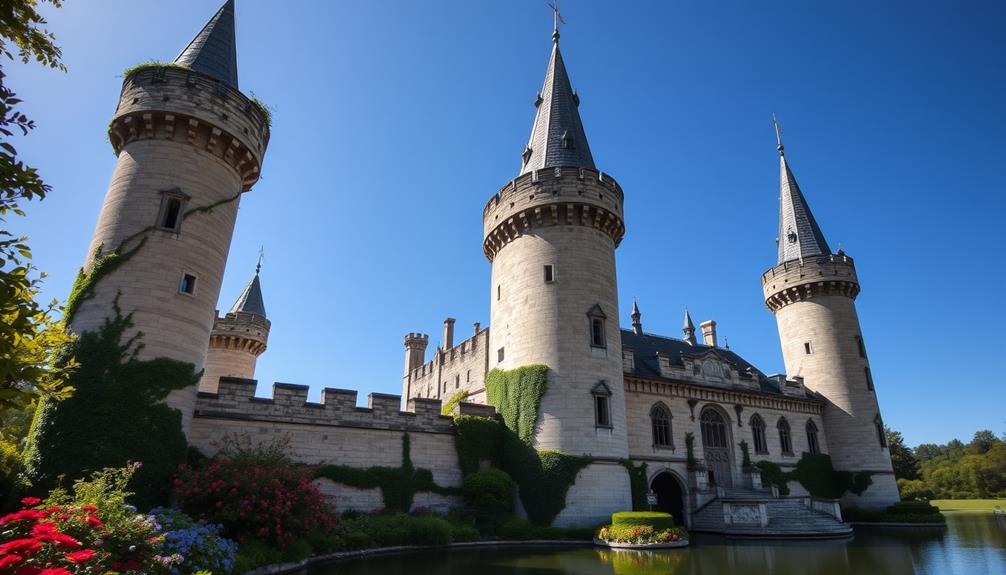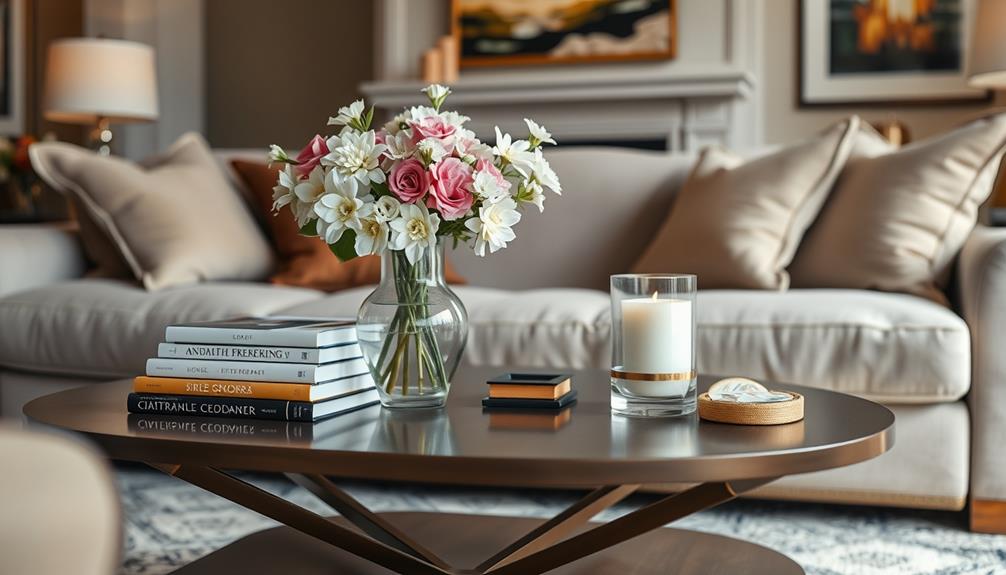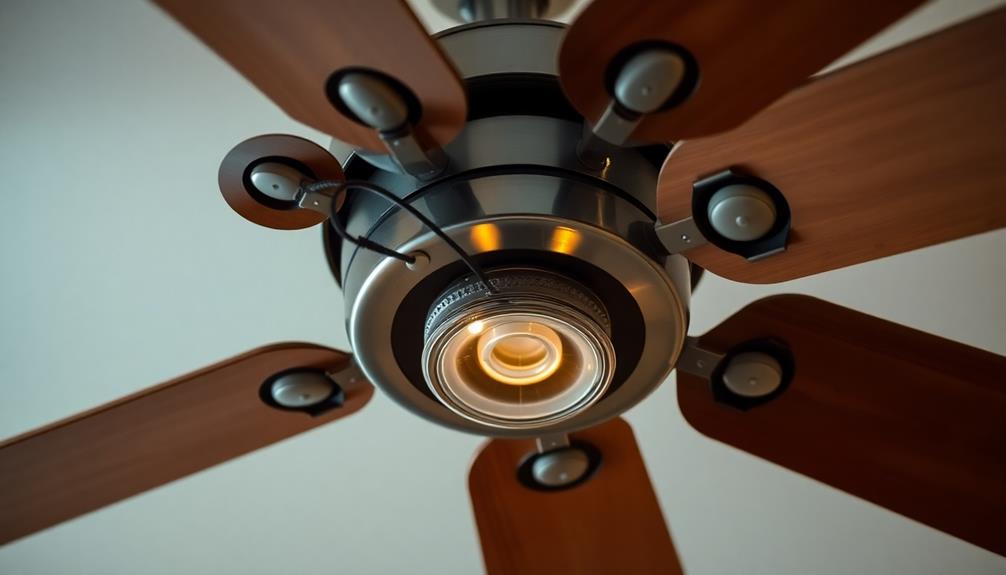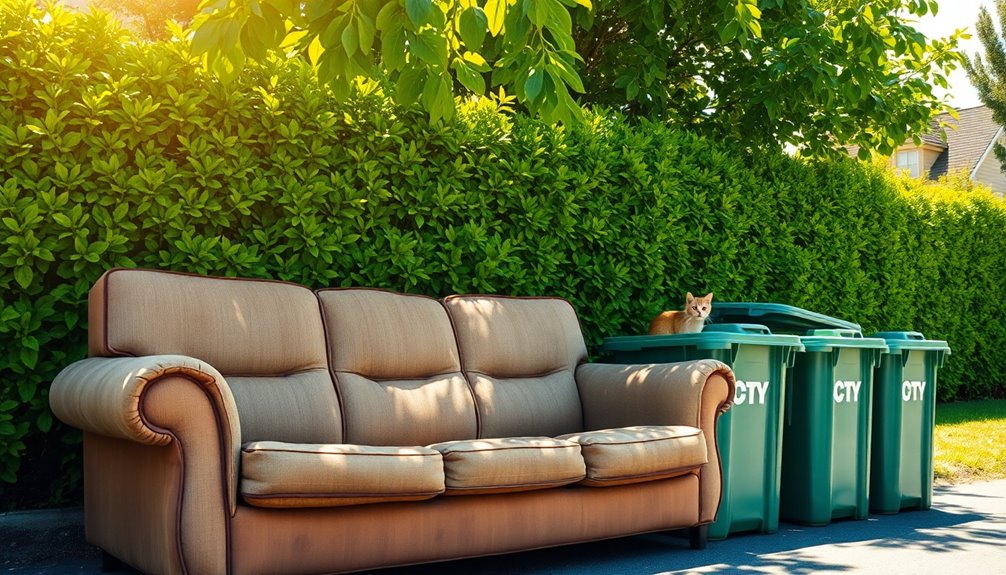Towers bring a unique appeal to architecture, blending historical importance with visual attractiveness. These elements, originally crafted for protection, evolved into symbols of sophistication in Tudor and Victorian designs. Their pointed roofs and detailed brickwork contribute to the overall character of any structure. Towers inspire nostalgia, producing visually captivating scenery while recounting tales of bygone eras. In the present day, modern versions uphold their charm by integrating eco-friendly materials and contemporary styles. Whether found in literature or urban landscapes, towers represent elegance and refinement. Stay tuned to learn more about their captivating versatility and lasting allure.
Key Takeaways
- Turrets serve as striking architectural elements, blending historical significance with aesthetic appeal in various styles like Gothic Revival and Tudor.
- Their unique designs feature intricate patterns and conical roofs, enhancing the charm and elegance of residential and public buildings.
- Turrets symbolize status and sophistication, contributing to the character and historical narrative of neighborhoods and urban landscapes.
- In literature and film, turrets evoke mystery and grandeur, enriching narratives with their enchanting presence in castles and magical realms.
- Modern turret designs incorporate sustainable materials and smart technology, preserving elegance while embracing contemporary architectural trends.
Definition and Historical Context
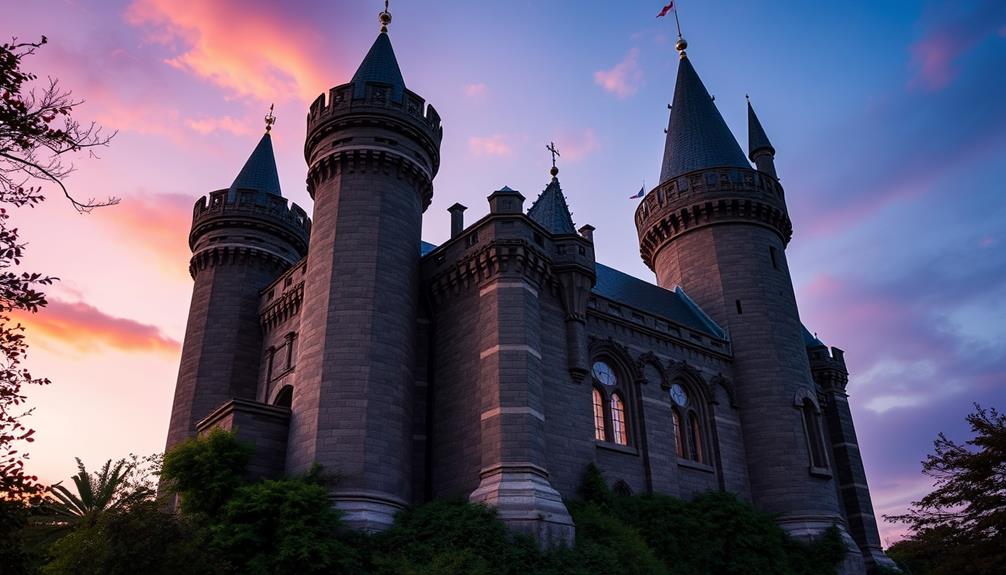
A turret, derived from French and Latin terms for "tower," has long been a defining feature in architectural design.
Historically, you'd find turrets serving as defensive structures in medieval castles, providing both protection and a commanding view of the surroundings.
As you explore Tudor architecture, which gained popularity in the late 15th century, you'll notice turrets reflecting that medieval influence.
The Tudor period in England saw a peak in turret use, symbolizing status and elegance in residential design.
Even during the 19th-century revival, these charming structures captured a romanticized view of the past.
Today, turrets remain a showcase of architectural creativity, blending history with aesthetics, inviting admiration and sparking curiosity in all who behold them. Whether they are found in medieval castles or modern skyscrapers, turrets continue to captivate with their timeless allure. Their unique form and structure offer a glimpse into the past, while also inspiring new ways of incorporating architectural features into contemporary design. For instance, designing efficient spaceship interiors could benefit from the utilization of turret-like structures to maximize space and functionality in a confined environment. The enduring appeal of turrets lies in their ability to seamlessly blend the old and the new, serving as a testament to the enduring power of architectural innovation. Additionally, turrets offer more than just aesthetic appeal; they also provide practical benefits, such as natural lighting and ventilation. Their unique shape and position make them ideal for capturing sunlight and promoting air circulation within a building. Furthermore, turrets can be equipped with durable roofing options, ensuring their longevity and functionality in various weather conditions. This combination of beauty and practicality makes turrets a valuable and versatile architectural feature for both historical and modern structures.
Architectural Styles Featuring Turrets
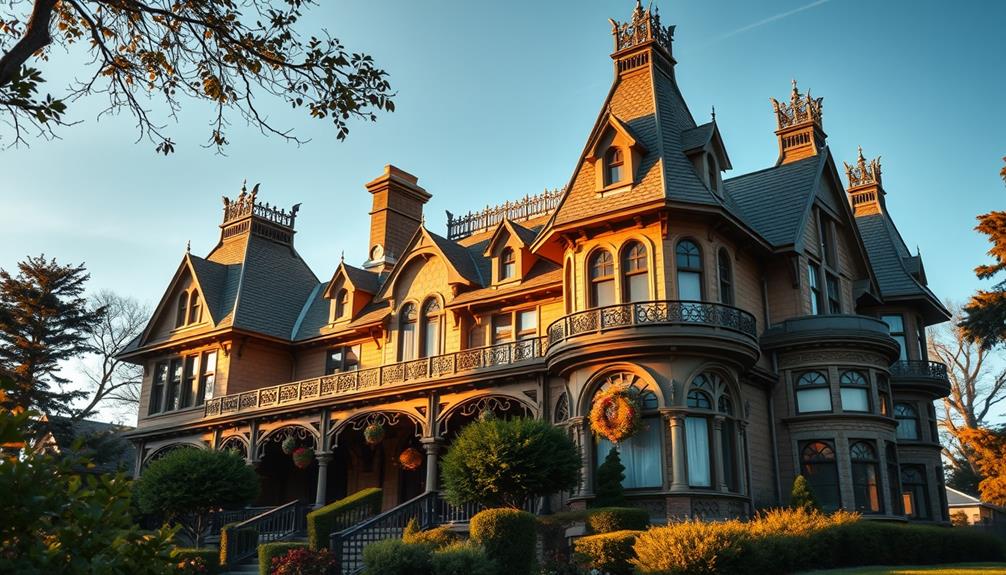
While exploring various architectural styles, you'll quickly notice that turrets play a significant role in creating visual interest and historical resonance.
In the Gothic Revival style, tall, pointed turrets evoke the grandeur of medieval castles, adding drama to Victorian homes.
The Queen Anne style features unique, irregular floor plans with crown-like turrets, showcasing ornate details and vibrant colors that capture attention.
Meanwhile, Tudor architecture embraces square or octagonal turrets, serving as decorative elements that reflect its medieval roots.
Each style integrates turrets in ways that enhance their charm, making them not just structural components but also symbols of elegance and sophistication in residential design.
Design Elements and Characteristics
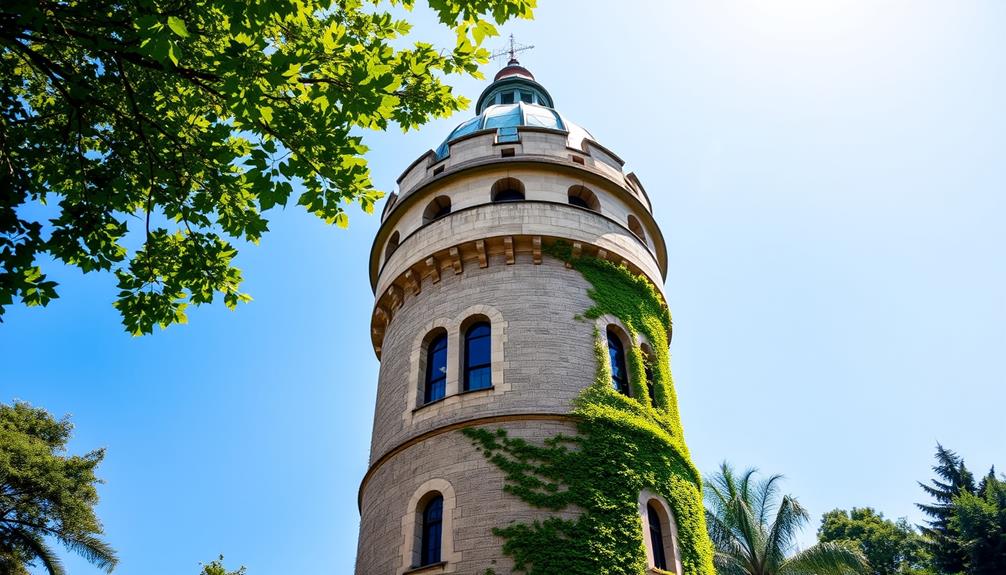
Turrets are often defined by their striking design elements and distinctive characteristics that enhance the overall aesthetic of a building.
You'll notice intricate brickwork and decorative patterns that create a fascinating contrast between wood and masonry. The conical roofs, often adorned with ornate detailing, are hallmarks of Victorian turrets, adding a touch of opulence to Queen Anne style houses.
As you explore these structures, look for decorative motifs—floral and geometric patterns—that enrich the visual experience.
Turrets are strategically placed to enhance asymmetrical designs, seamlessly integrating with gables and dormers.
These elements not only contribute to the uniqueness of each building but also celebrate the artistry of architectural craftsmanship, making turrets a striking feature in residential design.
Cultural Significance of Turrets
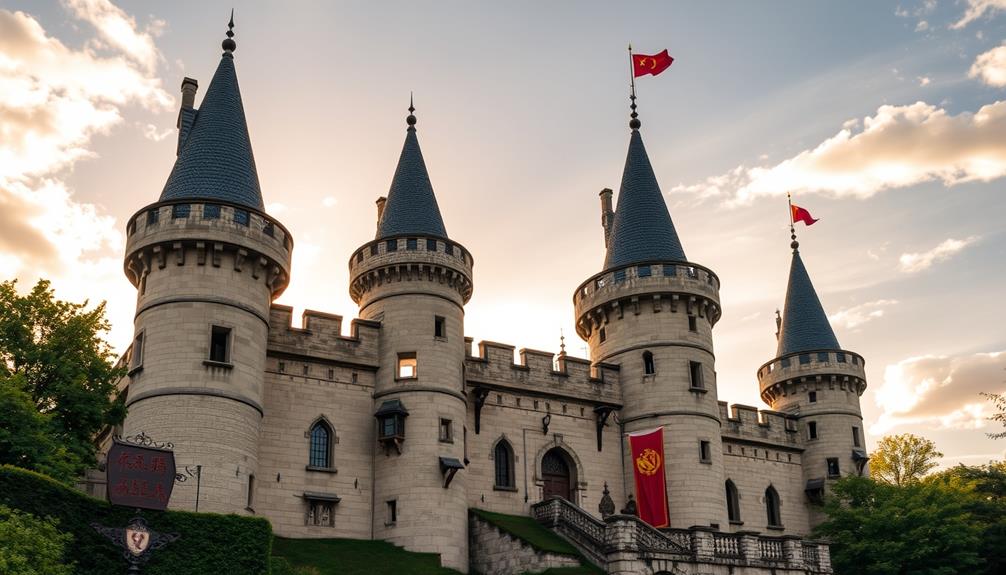
The charm of turrets extends beyond their architectural beauty; they hold significant cultural value in society. You can see how turrets symbolize wealth and sophistication, often marking the residences of the elite.
They contribute to the unique character and historical narrative of neighborhoods, reminding you of bygone eras. Turrets evoke nostalgia, connecting you to a romanticized view of the past, which is especially evident in historical districts.
Their striking presence captures your attention and enhances the aesthetic appeal of the landscape. Furthermore, turrets are integral to urban planning, shaping community identities and heritage sites.
Turrets in Literature and Film
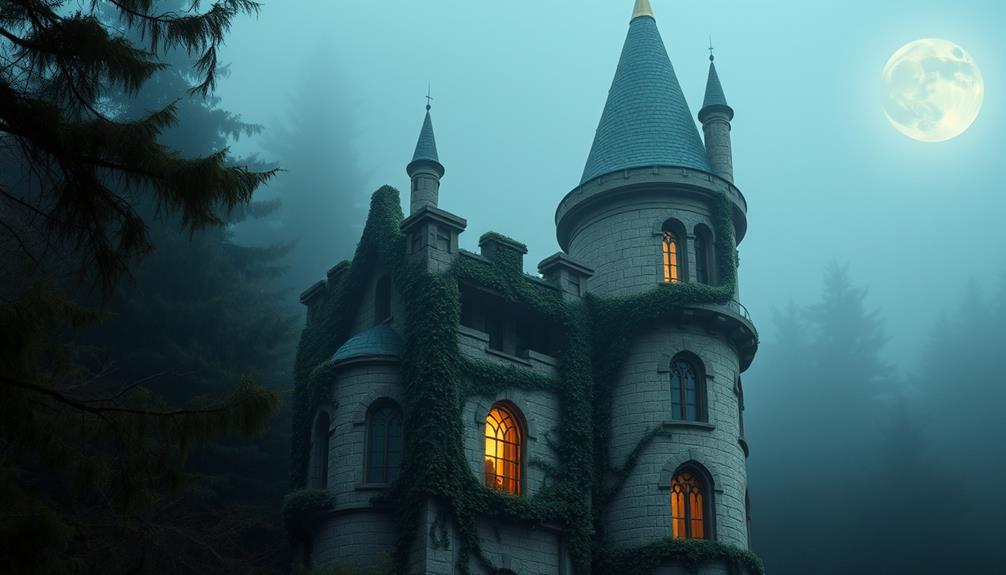
When you think of turrets, it's hard not to recall their dramatic appearances in literature and film. These architectural features often symbolize mystery and grandeur, engaging your imagination in stories like "Beauty and the Beast" or "Harry Potter."
Turrets set the stage for enchanted castles and magical domains, inviting you to explore hidden secrets and adventures. In films, their striking silhouettes create a sense of timeless elegance, making them the perfect backdrop for romantic encounters or epic battles.
Whether it's the ominous towers in gothic tales or the whimsical structures in fairy tales, turrets enhance the narrative, adding depth and character to the settings. They remind you that architecture can be as enthralling as the stories it houses.
Modern Interpretations of Turrets
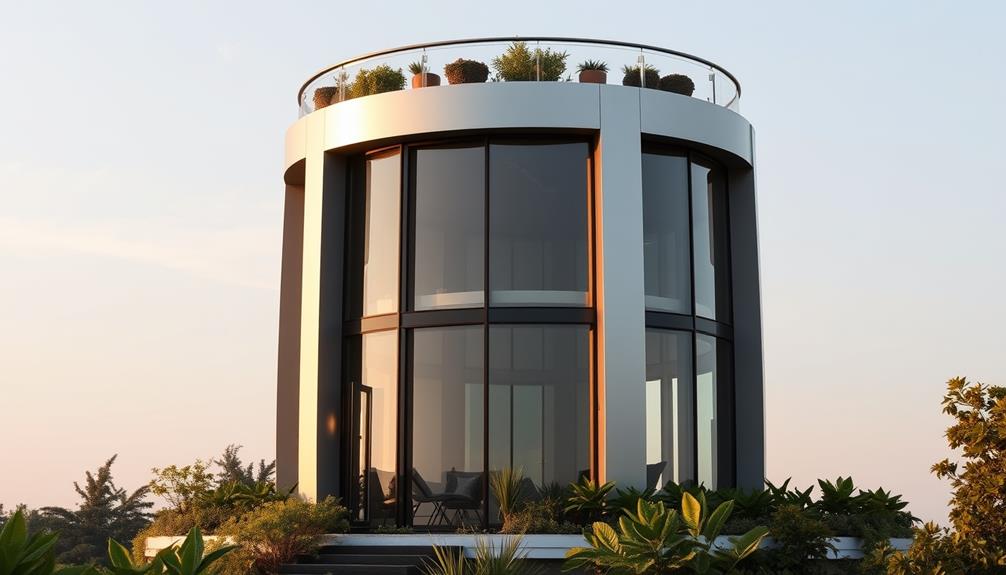
In today's architectural landscape, numerous modern interpretations of turrets blend historical charm with contemporary design.
You'll find that many new builds incorporate turret features while using sustainable materials that enhance durability and energy efficiency. These designs allow you to enjoy the elegance of traditional turrets without sacrificing modern conveniences.
Architects often combine classic elements, like conical roofs and intricate detailing, with sleek lines and minimalist aesthetics to create a fresh look.
This fusion not only pays homage to the past but also reflects current trends in architecture. Whether you prefer a cozy cottage or a sleek urban dwelling, these modern turrets provide a unique touch that elevates your space, proving that the beauty of turrets can thrive in today's world.
The Future of Turret Design
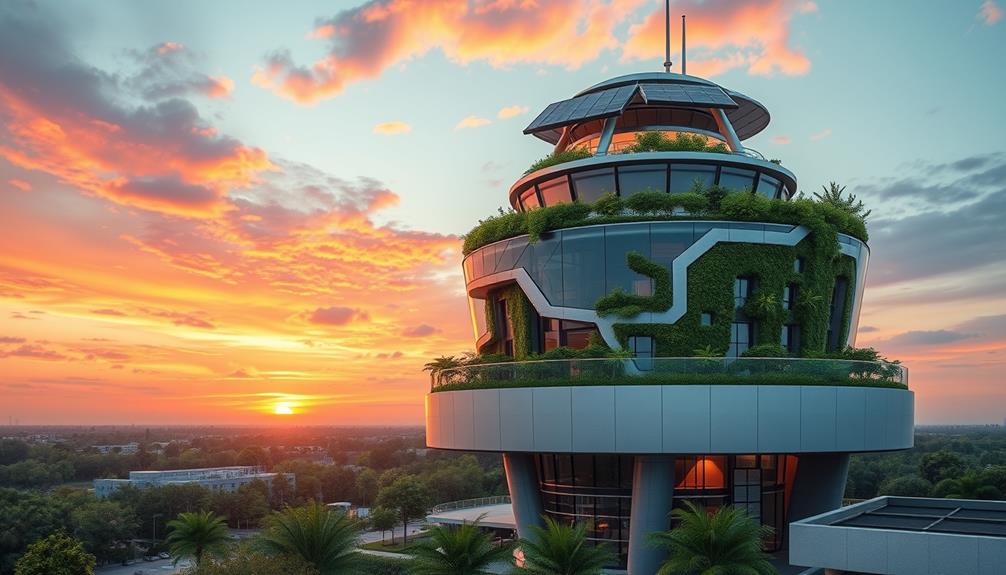
As architects look ahead, five key trends are shaping the future of turret design.
First, sustainability is becoming essential; you'll see more turrets constructed from eco-friendly materials that reduce environmental impact.
Second, technology integration will enhance functionality, with smart features embedded within turret spaces.
Third, minimalist aesthetics are emerging, balancing traditional turret charm with sleek, modern lines.
Fourth, adaptive reuse is gaining traction, allowing old turrets to find new purposes in contemporary designs.
Finally, community-focused designs are prioritizing public engagement, incorporating turrets into shared spaces that foster social interaction.
Frequently Asked Questions
How Do Turrets Affect a Home's Resale Value?
Turrets can greatly enhance a home's resale value by adding unique architectural appeal and character. Buyers often find them attractive, associating them with charm and elegance, which can lead to a higher selling price.
What Are the Maintenance Requirements for Turret Structures?
When maintaining turret structures, you'll need to regularly inspect for water damage, guarantee proper drainage, and repair any cracks. Cleaning the exterior and checking the roof's integrity are also essential to prevent long-term issues.
Can Turrets Be Added to Existing Homes?
Yes, you can add turrets to existing homes. They enhance the structure's character and aesthetic appeal. Just make certain you consult with an architect to maintain structural integrity and complement your home's architectural style effectively.
Are There Specific Building Codes for Turret Construction?
You'd think adding a turret's as simple as stacking blocks, but it's not. Specific building codes often govern height, materials, and structural integrity, ensuring your whimsical design doesn't turn into a towering disaster.
How Do Different Climates Impact Turret Design?
Different climates influence turret design by dictating materials and structural elements. In colder areas, you'll need insulation, while warmer climates may require ventilation. You'll also consider roof shapes to prevent snow accumulation or heat retention.
Conclusion
As you can see, turrets aren't just relics of the past; they're vibrant elements of modern architecture that combine history with innovation. You might think these features are outdated, but their contemporary interpretations showcase how they can harmonize with sustainable practices and modern design. Embracing turrets in today's buildings allows you to connect with the charm of yesteryear while celebrating creativity. So, why not let these elegant structures inspire your own architectural journey?
